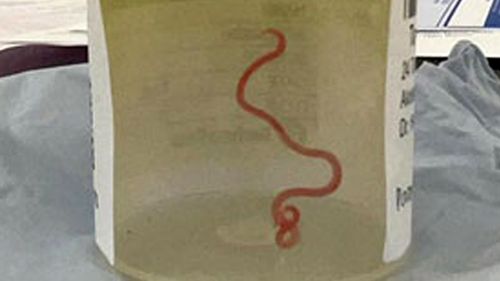Live worm found inside Australian woman’s brain in groundbreaking case
Australian medical experts found a live 8cms long roundworm from a python snake inside a NSW woman’s brain, the first case of its kind in the world.
Details of the shocking case were released today by the Australian National University and the Canberra Hospital.
The Ophidascaris robertsi roundworm was pulled from the 64-year-old woman after brain surgery, still alive and wriggling.

Doctors suspected larvae, or juveniles, were also present in other organs in the woman’s body, including the lungs and liver.
The type of roundworm is commonly found in the carpet python snake.
“This is the first-ever human case of Ophidascaris to be described in the world,” infectious disease expert and co-author of the study Sanjaya Senanayake said.
“To our knowledge, this is also the first case to involve the brain of any mammalian species, human or otherwise.
Senanayake said the larvae from the roundworm are normally found in small mammals and marsupials, which are eaten by the python.
The woman, from southeastern New South Wales, probably caught the roundworm after collecting a type of native grass, Warrigal greens, beside a lake near where she lived in which the python had shed the parasite via its faeces.

She cooked the Warrigal greens and was likely infected with the parasite directly from touching the native grass or after eating the greens.
In January 2021, she developed abdominal pain and diarrhoea, followed by fever, cough and shortness of breath, but health tests detected no sign of parasites.
The following year she began experiencing subtle changes in memory and thought processing and doctors advised her to undergo a brain MRI scan.
When the results came back, a neurosurgeon at Canberra Hospital was shocked to discover the live roundworm in the woman’s brain.

The patient is recovering well and is still being regularly monitored by doctors.
Senanayake said the case highlighted the danger of diseases and infections passing from animals to humans, especially as we start to live more closely together.
The researchers’ findings are published in the journal Emerging Infectious Diseases.








